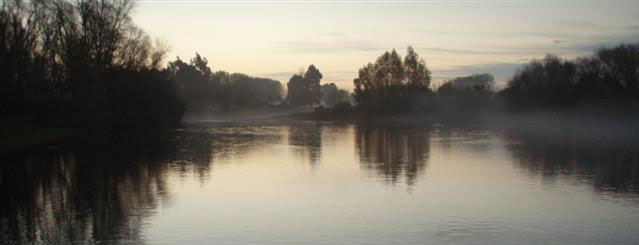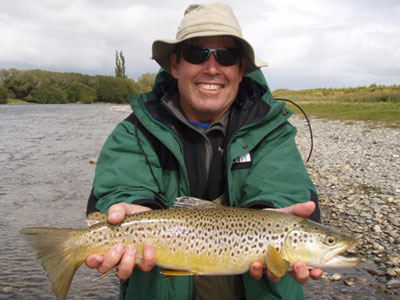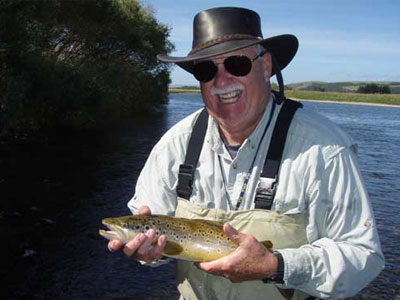Fly Fishing from Gore - what to expect
The Mataura River

The Mataura River flows in a southerly direction for 245 kms, from it’s source high
up in the Eyre mountains near the southern end of Lake Wakatipu, the lake that
New Zealand’s adventure capital Queenstown is built beside. It
reaches the sea at Fortrose, which was an early European Whaling Station from
1834 to 1836. This coastline near Fortrose is part of the Southern Scenic Route
through the Catlins region.
The river flows close to several small
villages and towns, including Garston, Athol, Lumsden and Riversdale, until it
passes through the township of Gore where Flyfish Mataura is based, then on
through the small towns of Mataura and Wyndham to the coast. This makes
Gore the place to stay, with most of the Mataura River and more than 25
other rivers and streams, within one hours drive.
Gore is named after
Colonel Thomas Gore-Brown, Governor of New Zealand from 1855 to 1861. It is a
lovely rural town with a population of around 10,000, with good shopping and a
very strong Arts Culture. In short the ideal spot
with all amenities handy and with plenty of interesting options for non fishing
partners.
 The Mataura River and it’s tributaries hold Brown Trout, no
Rainbows. There are no stocked trout, this is a 100% wild fishery. Average size
is 2 and a half to 3 and a half pounds with the occasional fish tipping the
scales well above these weights. Every year there are a few 10 pound fish caught
but these are the exception.
The Mataura River and it’s tributaries hold Brown Trout, no
Rainbows. There are no stocked trout, this is a 100% wild fishery. Average size
is 2 and a half to 3 and a half pounds with the occasional fish tipping the
scales well above these weights. Every year there are a few 10 pound fish caught
but these are the exception.
For most of it’s journey to the coast, the
Mataura River is a virtual series of ripples, glides and pools. It has easy
access - in most cases we can drive to within 50 to 100 metres of the river.
There are large stretches of shallow rippled water making relatively easy wading
and no need to walk long distances between fish.
The Mataura River has
the best Match the Hatch fishing in New Zealand and arguably in the world.
Mayflies make up a large part of the local trout diet, with the most common
Mataura species being Deleatidiums. It is one of the smallest and
most common Mayflies in New Zealand. The Nymphs are small and brown, about 1cm
in length, while the Duns are chestnut brown or brown/grey. We Match the Hatch
with #16 or #18 Nymphs and dries. Late in the season we may even go down to
#20.
The Mataura has huge numbers of Mayfly Nymphs in comparison to most
New Zealand rivers and this ensures great hatches, the trick being to figure out
whether it’s Emergers, Duns or Spinners that the fish are taking. Good hatches
often appear from early morning – 8 to 9 a.m. and sporadically throughout the
day. There is also a massive population of Net Building Caddis. For a bit of
heart pounding excitement, watch your #12 Goddards Caddis get smashed by a hard
fighting, strong Mataura Brown.
The Waikaia River is the main tributary
of the Mataura and it also offers great fishing as does the Waimea, Otamita,
Mimihau and Mokoreta rivers to name just a few of the many smaller streams that are close by. I also
regularly fish the Waipahi River, where New Zealand’s oldest fishing
competition, “The Waipahi Gold Medal” is held every November.
The Waipahi
is a tributary of the Pomahaka River, one of my favourite rivers to fish and
only 30 minutes drive from Gore. The Pomahaka has a good population of large
Brown Trout, with Sea Run Browns arriving from the Clutha River in mid
summer.
 West of Gore is the Oreti River which runs 130 kms North to
South, entering the sea near the city of Invercargill. The middle and upper
reaches have excellent fishing with the upper Oreti River noted for it’s big
fish, however this section is best suited to experienced fishermen as these fish
get a lot of pressure in mid summer and
are extremely wily.
West of Gore is the Oreti River which runs 130 kms North to
South, entering the sea near the city of Invercargill. The middle and upper
reaches have excellent fishing with the upper Oreti River noted for it’s big
fish, however this section is best suited to experienced fishermen as these fish
get a lot of pressure in mid summer and
are extremely wily.
If you wish to chase Rainbows, then the Upukerora, Whitestone, Mararoa and Waiau Rivers are a pleasant drive of 90 minutes through Northern Southland. All these rivers also offer great summer and autumn fishing.
The Province of Southland lies between 45 and 47 degrees south, this gives us long daylight hours – from 5 a.m. to 10 p.m. in midsummer.